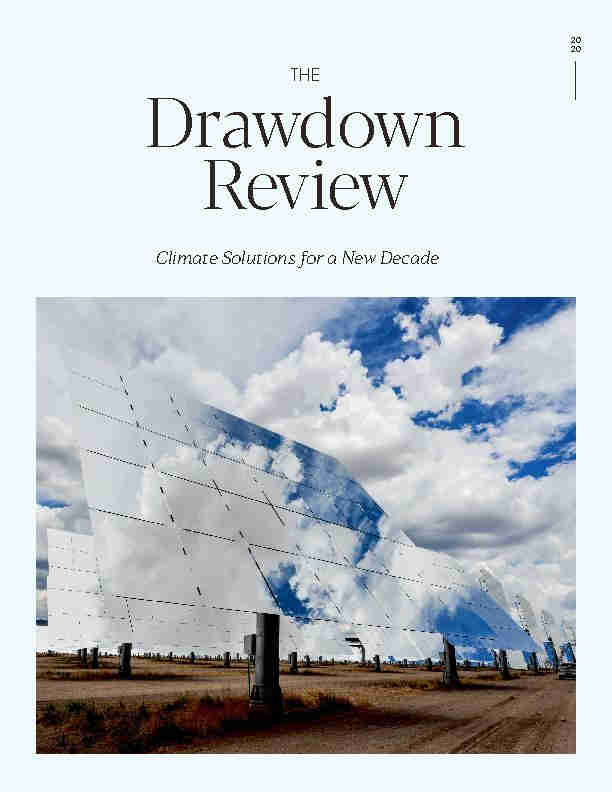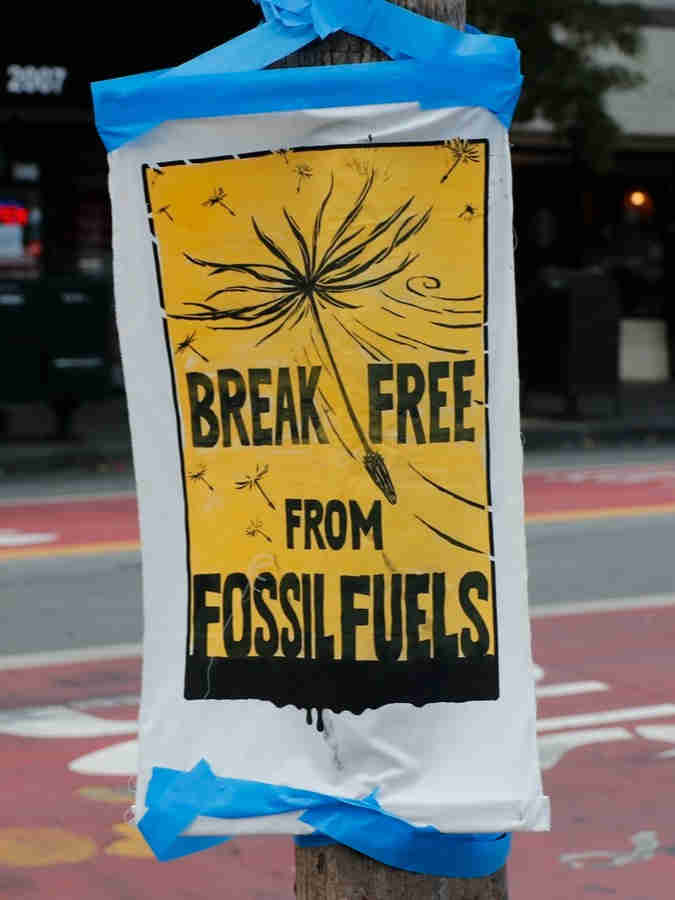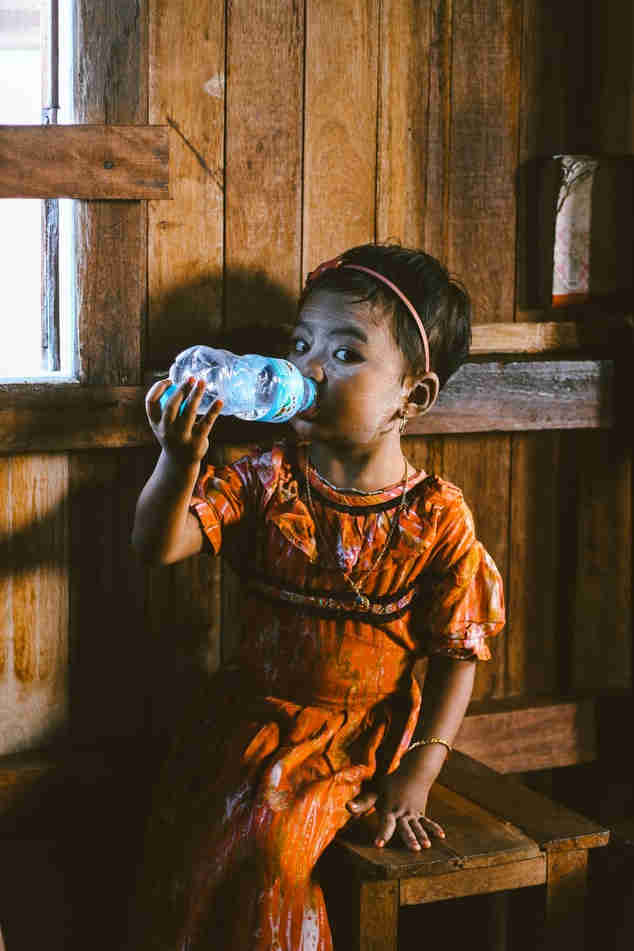In 2017, a book came out called “Drawdown: The Most Comprehensive Plan Ever Proposed to Reverse Global Warming”. (You can find a copy on SpaceshipOne books.) In the book, Project Drawdown introduced a groundbreaking concept: humanity can deploy a variety of bold climate solutions to reach a point (called “drawdown) where the concentration of greenhouse gases in the atmosphere actually starts going down — so that we’ll be on track to restore a safe and healthy climate.
Drawdown quickly became a New York Times bestseller. Its message of hope and opportunity has inspired readers around the globe and felt especially engaging given its straightforward language, infographics, and visuals for understanding climate solutions. The information in Drawdown has circulated widely and has helped cities develop their climate plans; schools develop climate curriculum; businesses develop climate goals, and communities take climate action.
The new-and-improved Drawdown Review

In 2020, Project Drawdown published an up-to-date, digital version called The Drawdown Review. This new version includes an update to the analysis provided in the first version and a new section entitled “10 Key Insights”, which provides a brief explanation of how to reach drawdown, and an excellent summary of the document’s full 100 pages, for those who cannot read it in its entirety.
After the short introduction and key insights, the Review goes on to discuss over 80 climate change solutions in detail. The solutions are split into three major categories, and it’s helpful to think of them as key climate goals:
1. Reduce Sources
2. Support Sinks
3. Improve Society
Each of these is then broken down into subcategories, which makes it easy for the reader to understand exactly which climate issue each solution applies to. Some solutions can also apply to multiple categories.
Climate Goal #1: Reduce Sources

Here’s where you’ll find climate solutions that focus on limiting greenhouse gas emissions, either by providing alternatives to fossil fuels or simply lowering energy demand altogether. The “Reduce Sources” category is broken down into five subcategories: “Electricity”; “Food, Agriculture, and Land Use”; “Industry”; “Transportation”; and “Buildings”.
Shifting 100% of our electricity production from fossil fuels to clean energy generation would, obviously, have a massive impact on reducing greenhouse gas emissions. But on a personal level, one of the most effective ways people can lower their own GHG emissions, especially those related to agriculture and transportation, is to eat foods that are local and plant-based.
The Industry subcategory is where you can find well-known eco-friendly practices such as composting, as well as solutions with broader impacts such as alternative refrigerants, alternative cement, and alternative plastics. In the Transportation subcategory, you’ll find some of the most personal climate solutions like carpooling and using public transportation to limit greenhouse gas emissions. The final subcategory under “Reduce Sources” is Buildings, which talks about how we can retrofit buildings to be more energy-efficient and thus reduce electricity use (for example, through better insulation and smart thermostats).
Climate Goal #2: Support Sinks

The Review’s second category, “Support Sinks”, moves us beyond the idea of emitting carbon to the idea of actually storing carbon. Carbon sinks are natural stores of carbon that absorb carbon dioxide from the atmosphere, and are sometimes considered even more critical for our climate’s health than eliminating the use of fossil fuels.
Even if we put a halt to all emissions tomorrow, the Earth’s atmosphere will still be holding the billions of tons of extra CO2 we’ve already emitted. It isn’t going anywhere anytime soon, and will continue to heat up our climate and wreak havoc on our world. That’s why we need to take carbon out of the air and store it — as well as ensure that existing carbon sinks are able to do what they do best.
The Drawdown Review lays out three main types of carbon sinks: “Land Sinks”, “Coastal and Ocean Sinks”, and “Engineered Sinks”. The Earth’s soil is an extremely critical carbon sink, and we’ve already lost one-third of our topsoil to desertification, which means we need to swiftly shift our industrial agriculture systems and land management practices to regenerative methods (i.e integrating trees onto farmland, growing crops that help the soil absorb more carbon, etc.).
Coastal and wetland ecosystems are also excellent sources of carbon storage, so protecting and restoring these areas is critical for our climate’s health, too. “Engineered Sinks” refer to technologies that actually capture and remove carbon dioxide from the atmosphere, to permanently store it in things like alternative cement and even consumer items like bracelets.
Climate Goal #3: Improve Society

Climate solutions are not just about reducing emissions and storing carbon for our environment’s sake. Clean air is a human right. Clean water is a human right. Healthy food is a human right. Healthcare is a human right. Education is a human right. So, as we enact climate solutions, we must ensure that their cascading benefits are accessible to everyone.
Whether climate solutions actually get implemented, and how successful they are, can often come down to a single factor: education.
One of the main points in the “Improve Society” category is that improved educational access will bring us dramatically closer to the point of drawdown.
When educational access improves, especially for young women, so does reproductive healthcare and so does economic opportunity — which directly correlate to decreased family sizes and, given Earth’s finite resources, lead to a more sustainable human population over time.
In the population conversation, it’s important not to focus too much on how many people Earth can support. A more productive question to ask is, how many people support Earth? There’s room for all who treat our planet well and leave it better than they found it.
To Wrap Up: Climate Solutions Are the Future
After covering the three main categories, the Review concludes with a brief summary of climate solution “accelerators” (i.e. conditions needed for climate solutions to move forward), along with a list of each solution, ranked by its ability to get us closer to drawdown. Accelerators include investing in climate solutions, changing policies to protect the environment, and reshaping our culture to celebrate the fact that humans are a part of nature, and that our health inherently depends on the health of the natural world.
The Drawdown Review balances the urgency of our climate crisis with a sense of hope by showing that it is possible to prevent irreversible damage with the solutions we already have. For those looking to supplement their knowledge of climate solutions, or for those who are interested but have no idea where to get reliable information, Project Drawdown is a perfect place to start.
